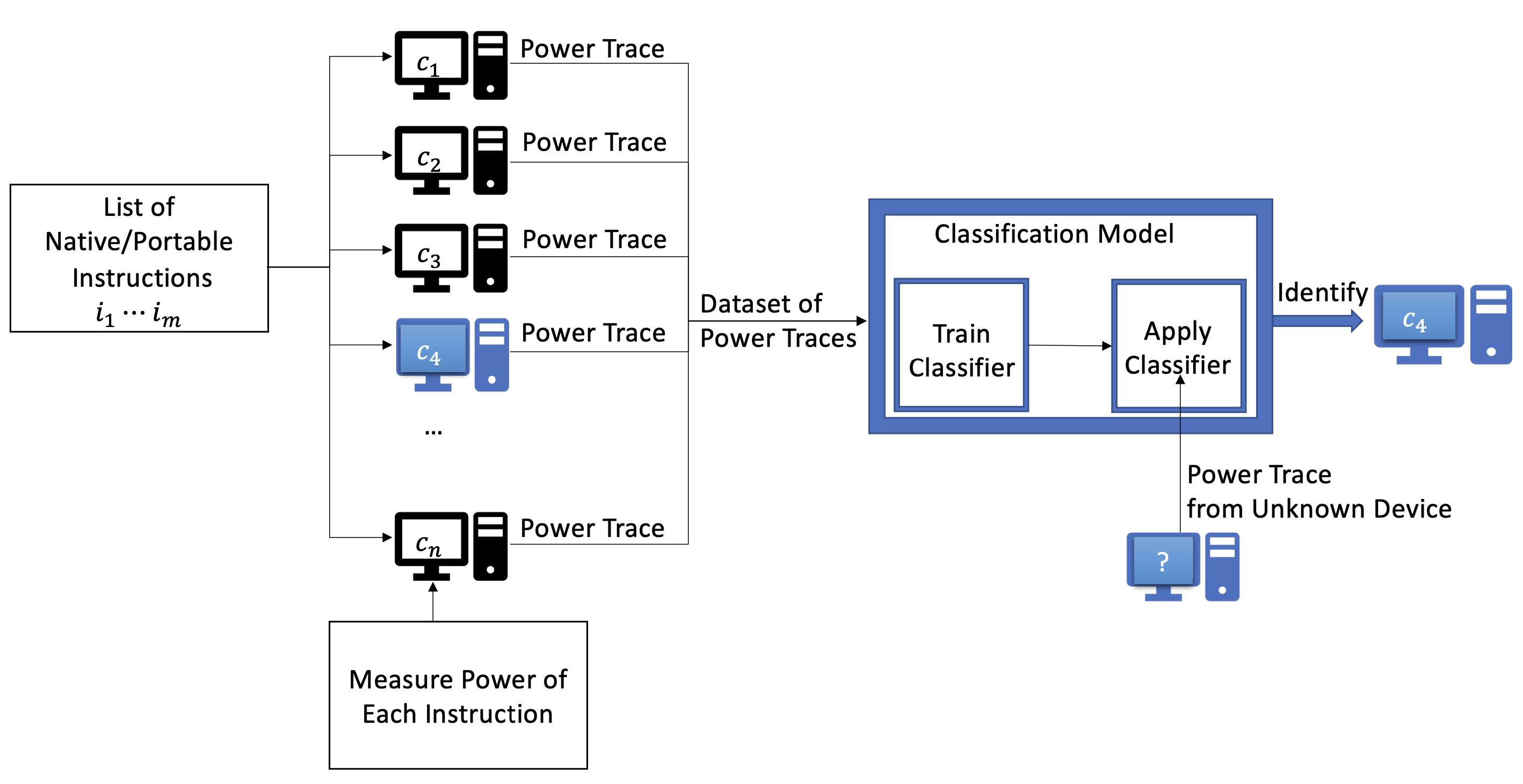The Finger in the Power: How to Fingerprint PCs by Monitoring their Power Consumption

Authors: Marina Botvinnik , Tomer Laor , Thomas Rokicki , Clémentine Maurice , Yossi Oren
Venue: 20th Conference on Detection of Intrusions and Malware & Vulnerability Assessment, DIMVA 2023
Abstract
Power analysis has long been used to tell apart different instructions running on the same machine. In this work, we show that it is also possible to use power consumption to tell apart different machines running the same instructions, even if these machines have entirely identical hardware and software configurations, and even if the power consumption measurements are carried out using low-rate software-based methods. We collected an extended dataset of power consumption traces from 291 desktop and server systems, spanning multiple processor generations and vendors (Intel and AMD). After analyzing them, we discovered that profiling the power consumption of individual assembly instructions makes it possible to create a fingerprinting agent that can identify individual machines with high accuracy. Our classifier approaches its peak accuracy after less than 10 instructions, meaning that the fingerprint can take a very short time to capture. We analyzed the stability of the fingerprint over time and discovered that, while it remains relatively stable, it is significantly affected by temperature changes. We also carried out a proof-of-concept evaluation using portable WebAssembly code, showing that our method can still be applied, albeit at a reduced accuracy, without using native instructions for the profiling step. Our method depends on the ability to measure power, which is currently restricted to high-privileged “ring 0” code on modern PCs. This limits the current use of our method to defense-only settings, such as strengthening authentication or anti-counterfeiting. Our tools and datasets are publicly released as an open-source repository. Our work highlights the importance of protecting power consumption measurements from unauthorized access.